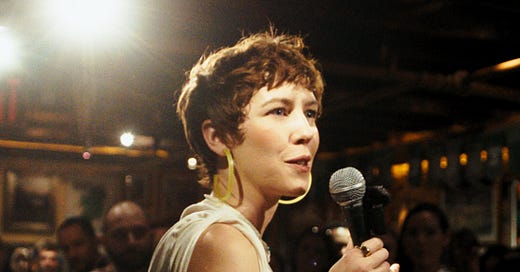What is Folkist Work?
A newsletter about using mostly-free, mostly-analog folk practices to make modern life feel worth living again.
Hi, I’m Nora.
I grew up with trad seisiúns and tamagotchis, feral hours in the woods and unsupervised hours in early chatrooms. In my daily life, the slow work of growing my own food or knitting a sweater weaves into a day job spent making the internet: training an AI chatbot on customer service skills I learned as a bartender, or designing a website inspired by the feeling of reading behind the couch as a small child.
In a culture that has set up a false binary of either abandoning our backwards past or returning to the imagined fantasy of a perfect one, I think there’s a weirder and wilder third way. As we all try to survive the world as it is while shaping the world as it will be, I think it’s about time to remember and redefine the folk arts.
Artmaking, after all, pre-dates agriculture. Painting has always been a form of memory and music a form of medicine. Beauty can still be a form of currency. Dance is a survival skill. By turning “the arts” into professions and trapping creativity behind the glass of a computer screen or inside an academic ivory tower, we’ve quickly forgotten that the arts are not just a way of making a living for a talented few, they’re supposed to be a way of making a life that is accessible to all of us.
In 2019, my partner and I started a small grassroots artist residency for folk artists and culture-makers out of my home in Upstate New York to experiment with solutions to a pervasive problem. I’d noticed that the institutions we’ve built around the arts quickly ossify around fundraising and staffing and maintaining brick and mortar assets. I wanted to know if it was possible to actually center artists and makers in systems of creative support, and I suspected that it would require methods that looked very different from the art world we’ve come to know.
This newsletter feels like a little green shoot pushing up through the compost of years of this experimenting. It’s informed by decades of my own attempts to balance creative vocation with bill-paying work, and by countless dinner-table conversations with painters, dancers, podcast producers, fiddlers, storytellers, and other visionary seekers. It’s a bit of a commonplace book of what I keep stumbling on while rummaging through the trash heap of folk history. You can expect little essays and curated resources for using our ancestors’ mostly-free, mostly-analog folk practices to endure a difficult world, work for a better one, and make modern life feel worth living again.
So many of us know that something is missing from the way we live now. The algorithms will try to sell the solutions back to us as products and apps, but the best things in life used to be free.
Get folkist with me, and we’ll try to remember together.



